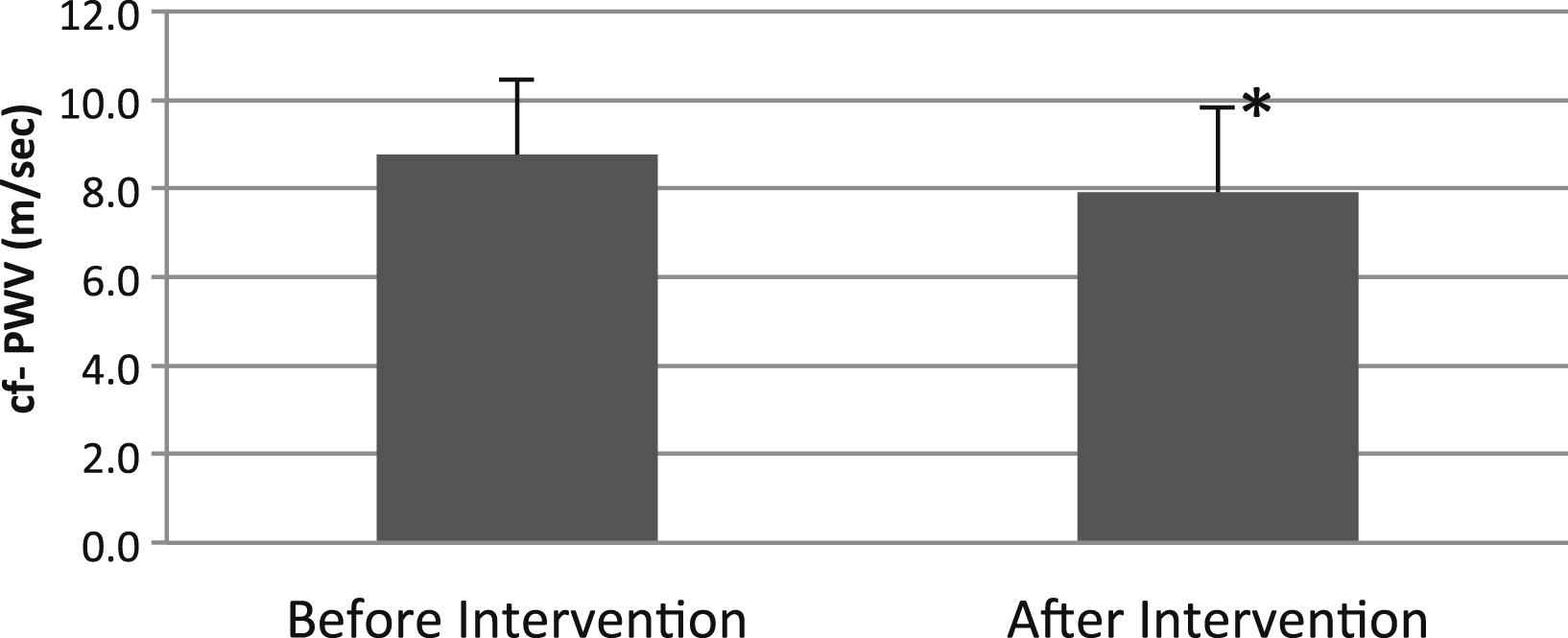P4.06 AMBULATORY CARDIAC REHABILITATION IMPROVES PULSATILE ARTERIAL HEMODYNAMICS – A PILOT TRIAL
- DOI
- 10.1016/j.artres.2012.09.154How to use a DOI?
- Open Access
- This is an open access article distributed under the CC BY-NC license.
Introduction: In patients with coronary artery disease (CAD), both arterial stiffness and wave reflections are increased and predict unfavourable cardiovascular events. Cardiac rehabilitation has the goal to reduce risk factors and slow the progression of the disease.
Aim: The aim of the study was to prospectively determine the impact of a 5-weeks ambulatory cardiac rehabilitation program on pulsatile hemodynamics.
Methods: Male patients following coronary interventions, bypass surgery or acute coronary syndromes underwent exercise training (35 minutes aerobic exercise at 50–70% of heart rate reserve 3x/week) and resistance training 2x/week. Before and after the program, carotid-femoral pulse wave velocity (cf-PWV) and wave reflections (Augmentation Index corrected for heart rate 75 – AIx@75) were measured, using applanation tonometry and a transfer function (SphygmoCor system). Exercise capacity was assessed with an incremental cycle ergometer protocol.
Results: 24 men (mean age 57 years) participated in the study. Following the intervention, brachial systolic blood pressure tended to decrease from 136.8 (SD 17.3) to 133.3 (SD 10.1) mm Hg (p=0.328). Brachial diastolic blood pressure changed from 82.7 (SD 8.3) to 79.2 (SD 6.9) mm Hg (p=0.134). Exercise capacity improved significantly from 154.2 (SD 31.1) to 168.5 (SD 31.9) Watt (p<0.0001). Cf-PWV decreased significantly from 8.7 (SD 1.7) to 7.9 (SD 1.9) m/sec (p<0.05) - Figure, and AIx@75 decreased significantly from 20.4 (SD 8.7) to 17.5 (SD 8.1) (p<0.05). Finally, exercise capacity was inversely and significantly related to cf-PWV (r= −0.344, p<0.05) and AIx@75 (r = − 0.603, p<0.0001).
Conclusion: A structured ambulatory rehabilitation program improves pulsatile hemodynamics in CAD patients and may, thus, improve prognosis.

Arterial Stiffness before and after 5 week ambulant cardiology rehabilitation cf-PWV, carotid – femoral pulse wave velocity
Cite this article
TY - JOUR AU - M. Pfob AU - N. Mürzl AU - E. Müller AU - B. Eber AU - T. Weber PY - 2012 DA - 2012/11/17 TI - P4.06 AMBULATORY CARDIAC REHABILITATION IMPROVES PULSATILE ARTERIAL HEMODYNAMICS – A PILOT TRIAL JO - Artery Research SP - 184 EP - 185 VL - 6 IS - 4 SN - 1876-4401 UR - https://doi.org/10.1016/j.artres.2012.09.154 DO - 10.1016/j.artres.2012.09.154 ID - Pfob2012 ER -
